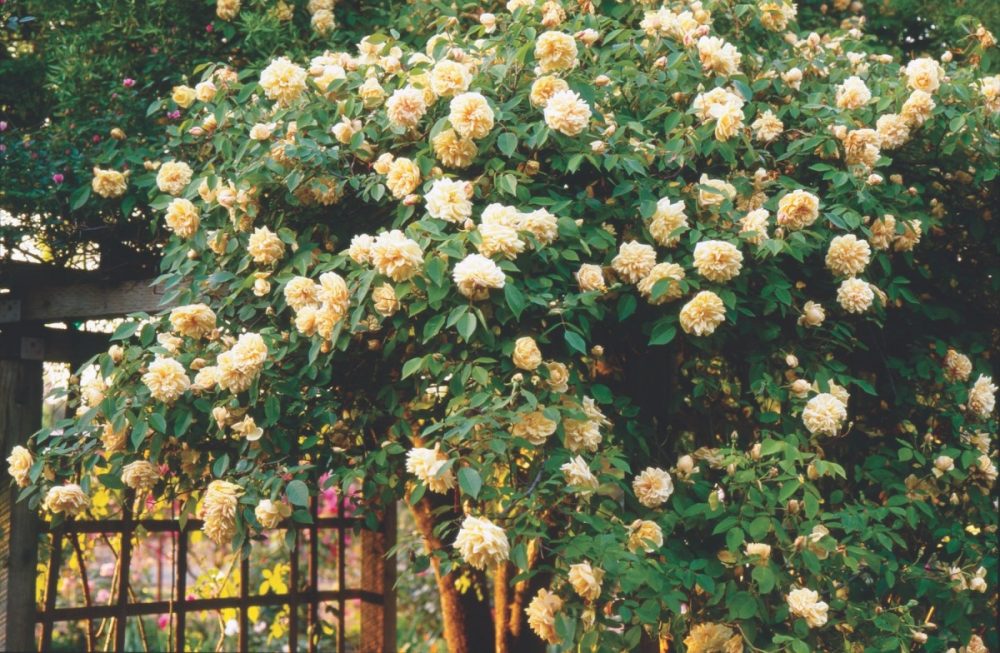
John Boyle O’Reilly once wrote, “The red rose whispers of passion, And the white rose breathes of love; O, the red rose is a falcon, And the white rose is a dove.”
When he references the love and passion that the rose represents, the writer’s sentiments echo many of our own. Perhaps no other flower is as emblematic as the rose. We stand in awe of the sweetness of an ‘Alberic Barbier’ newly in bloom and we revel in the grace of ‘Reve D’or.’
Which one should we choose for just that special spot in our garden? Which one will bring our flower arrangements the grace and structure we desire?
Some of the best roses are still the ones that have been around for generations. Often called antique or heirloom roses, these were the roses our grandmothers and great-grandfathers grew and told stories about at the family dinner table as if they had always been part of the family. And in a sense they really were. They were always a part of the home. They were always at the dinner table in a vase so all could take in their beauty and smell their sweet fragrance.
For many of us they were, and forever will be, a special part of our childhood memories.
Happily, these roses are still with us. Their beauty and fragrance hasn’t changed. They remain for us to introduce to the next generation that comes along.

Planting and Growing Antique Roses
To enjoy our antique roses to their fullest potential, there are a few things we must remember in planting and maintenance.
PLANTING: Dig a hole twice as wide as the rose container. Mix half of the native soil with composted manure and a slow release fertilizer. Be sure to plant the rose a little high to help provide drainage.
CARING: The Climber needs the assistance of an upright structure to climb successfully. You can plant it on an obelisk or post. Guide the rose to climb in the desired direction with nails and copper wire. Attach the rose to the wire every 18 to 24 inches with green Velcro strips. Ramblers need to have their canes spread out like a fan or a V-shape. Attach to a trellis or lattice against a wall. The lattice should be about two inches away from the wall to ensure good air circulation. Without good air circulation, the rose is more likely to get fungal disease.
After flowering, look for fast-appearing vegetative growth that will need to be removed to increase blooms on the next flowering. Remember air circulation is important and thin out any areas where the foliage is dense. If you desire larger blooms, remove all flowers but one in a cluster.
WATERING: Make sure to water the base of the plant only. Avoid watering any foliage or disease can occur.
CUTTING: Cut stems just prior to blooms opening. Deadhead any remaining flowers to promote repeat blooming.
ANTIQUE ROSE SOURCES: Petals from the Past, Jemison, AL; Antique Rose Emporium, Independence, TX; Heirloom Roses, St. Paul, OR
Antique Rose Cultivars to Consider
Climbers:
- ‘New Dawn’- pale pink, 1930
- ‘Dortmund’ – bright red, 1955
- ‘Reve D’or’ – peachy cream, 1869
Ramblers:
- ‘Alberic Barbier’ – radiant white, 1900
- ‘Veilchenblau’ – a thornless purple-violet, 1908
- ‘Albertine’ – apricot that fades to white, 1921
By Troy Rhone | Photogrpahy by Gisele Ott and Saxson Holt
